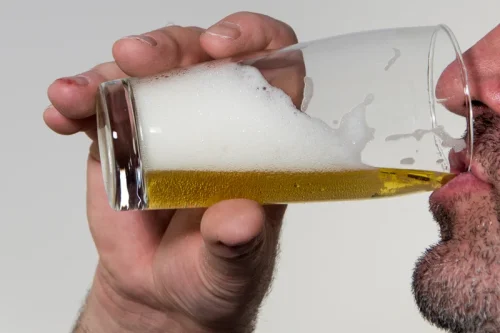Alcoholic Neuropathy: Causes, Symptoms, & Treatments

In a study using a D-galactose model of aging in mice, Salama et al. [50] found that chrysin prevented neurodegeneration, boosted mitochondrial autophagy and biogenesis, and reduced oxidative stress and neuroinflammation. The increased ER stress response and the suppression alcohol neuropathy of autophagy in the alloxan model of DN may be the outcomes of hyperglycemia’s enhancement of oxidative stress. Significant differences were demonstrated in the peripheral sensory function of median nerves in all three tested frequencies with Neurometer®.
Progressed disease

If you are having difficulty avoiding alcohol, there are resources that can help you quit. In general, it takes years for alcoholic neuropathy to develop, so a long-standing history of heavy alcohol use is typical. Some people experience a faster onset and progression of alcoholic neuropathy than others. It’s not completely clear why some people are more prone to this complication than others. Liposomes are lipid-based nanocarriers that bring drugs to their target sites [27].
Medical Professionals
There are many studies suggesting the role of MEK/ERK signaling in inflammatory pain in male [60–63] and female rats [64]. Deficiency of vitamins other than thiamine may also contribute to clinical features of alcoholic neuropathy. Chronic alcoholism can alter the intake, absorption and utilization of various nutrients (nicotinic acid, vitamin B2, vitamin B6, vitamin B12, folate or vitamin E). Thus, these vitamin deficiencies were not considered to be major causal factors of neuropathy [26].
Box 1: Search strategy for this review
- In general, most of the aforementioned diseases are the result of chronic excessive alcohol use.
- Studies have indicated that IL-17 can stimulate the production of TNF-α and is implicated in the development of IR [36].
- Three of these tests record heart rate changes when performing specific activities, while the rest measures changes in blood pressure.
- Phosphorylation of the autophagy-related protein UNC-51-like kinase 1 (ULK1) by the AMP-activated protein kinase (AMPK) stimulates autophagy [76].
- Some people may have difficulty carrying out daily living or self-care tasks and may have trouble with work duties.
Testing the median nerve revealed increased thresholds in female patients with obesity versus controls at all tested frequencies, indicating a deteriorated function in large myelinated, small myelinated and small unmyelinated sensory fibers. Similarly, peroneal nerve testing revealed a tendency of increased thresholds, but these did not reach the level of significance. An increase in case numbers may further confirm the statistically significant difference indicated by the increased CPT values at the peroneal nerve compared to controls with a normal BMI range.
The relationship between NLR and T2DM
Thiamine, folate, niacin, vitamins B6 and B12, and vitamin E are all needed for proper nerve function. Drinking too much can alter levels of these nutrients and affect the spread of alcoholic neuropathy. Fortunately, abstaining from alcohol can help restore your nutritional health. Insulin resistance induces overexpression of ER stress indicators such as p-eIF2, ATF4, CHOP, sXBP1, p-IRE1, and p-ASK1 at the mRNA or protein level, causing neuronal cell death in neuroblastoma cells [81].

Symptoms & Signs
Naik et al. [38] suggested the involvement of oxidative stress in experimentally induced chronic constriction injury of the sciatic nerve model in rats. Endoneural oxidative stress leads to nerve dysfunction in rats with chronic constriction injury [39]. A significant decrease in the activity of anti-oxidant enzymes (superoxide dismutase and catalase) and an increase in lipid peroxidation were observed in sciatic nerves of diabetic rats with established neuropathic pain [40].
It is likely to get worse if the person continues to use alcohol or if nutritional problems are not corrected. Alcoholic neuropathy is usually not life threatening, but it can severely affect quality of life. For the most part this review consists of non-interventional studies for which generally accepted tools to evaluate risk of bias are not available. To assess the bias in these we applied the Jadad score which takes into consideration quality of randomisation and blinding as well as reporting of withdrawals to assess bias in RCTs [9].
Some conditions may resolve completely with treatment, and some may progress, even with treatment. For example, with trigeminal neuralgia, it can be challenging to achieve pain control, even with treatment. Nerve blocks are injections that prevent a nerve from functioning and can help relieve pain for months. Sometimes, repeated injections are needed when the nerve block therapy wears off. Various treatments may be used to control neuralgia and treat the underlying cause. Treatments for neuralgia pain can include medications or procedures to help alleviate the pain.


The alcohol’s toxic effects on our nerves disrupt the intricate communication network between the brain, muscles, skin, and internal organs. As yet there is no effective therapeutic intervention available for relieving the neuropathic pain due to chronic alcohol consumption. Izumi et al. [73] also demonstrated that a single day of ethanol exposure in rats on post natal day 7 results in significant apoptotic neuronal damage throughout the forebrain after 24 h of ethanol administration. Thus, it is quite possible that chronic alcohol consumption is responsible for inducing neuropathy by activation of the caspase cascade and may be an important target for the treatment of alcoholic neuropathy. Oxidative stress is known to play a very important role in experimental animal models of neuropathic pain. Lee et al. [36] suggested that reactive oxygen species are importantly involved in the development and maintenance of capsaicin-induced pain, particularly in the process of central sensitization in the spinal cord in rats.
